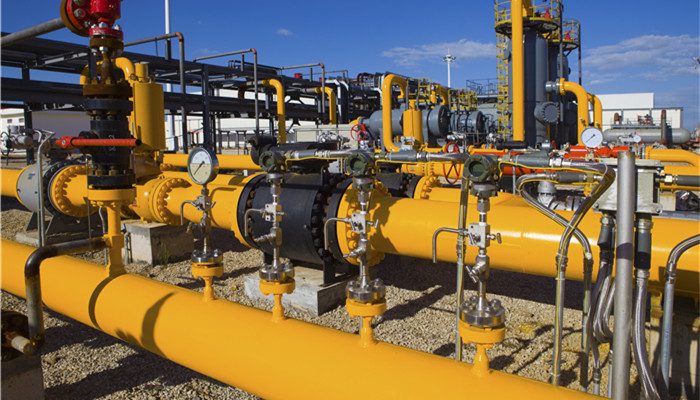
Liquid nitrogen has a wide range of application fields and the industry has good development prospects.
Liquid nitrogen (LN2) refers to the liquid form formed by nitrogen at low temperatures. It appears as a colorless and transparent liquid with a boiling point of -196.56°C. It is non-corrosive and slightly soluble in water and ethanol. The main production methods of liquid nitrogen include cryogenic air separation, molecular sieve air separation, membrane air separation, etc. Among them, the cryogenic air separation method is currently the mainstream production method for industrial preparation of liquid nitrogen. It uses air as raw material, purifies the air, pressurizes it, liquefies it in a cooling environment, and separates nitrogen through the different boiling points of each element in the air. Liquid nitrogen has the characteristics of low permeability, ultra-low temperature, and high expansion, and is widely used in food, chemical industry, medical, metallurgy, electronics, plastics and other fields.
Specifically, in the food field, liquid nitrogen is widely used in food freezing because it is non-toxic, odorless and inert to food ingredients; in the medical field, liquid nitrogen is widely used in anesthesia, medical packaging, medical replacement gas, and biological samples. Preservation and other scenarios; in the metallurgical field, liquid nitrogen is widely used in nitriding treatment, sintering protective gas, annealing protective gas and other scenes; in the chemical industry, liquid nitrogen is widely used in spandex, plastics, tires, rubber and other scenes; in the electronic field, Liquid nitrogen is widely used in packaging, sintering, annealing and other scenarios.
Judging from the price trend, the current domestic liquid nitrogen price fluctuates greatly. According to the“In-depth Market Research and Investment Strategy of the Liquid Nitrogen Industry in 2022-2026” released by the Industrial Research Center “Recommendations Report” shows that before September 2021, due to factors such as centralized maintenance of chemical companies and related energy consumption policies, domestic liquid nitrogen production has declined and supply has tightened. Against this background, in January 2021 , June, August, and September, the price of liquid nitrogen increased significantly, reaching the highest value of the year in September, close to 940 yuan/ton; in the fourth quarter of 2021, affected by factors such as the relaxation of power restriction policies and the reduction of application market demand, liquid nitrogen Prices gradually dropped, with the national average price falling to 577 yuan/ton in November.
In the first quarter of 2022, the price of liquid nitrogen showed a trend of first falling and then rising. Against the backdrop of the gradual recovery of domestic manufacturing and the continued warming of application market demand, the national average price in the first quarter reached 550 yuan/ton, a year-on-year increase of 9.2%. In summary, it can be seen that the price trend of liquid nitrogen in my country is greatly affected by application market demand and relevant policies. In the future, domestic enterprises will need to increase their research and development efforts on liquid nitrogen to promote the continuous expansion of its application fields and the continuous expansion of market development space.
Industrial Analyst personnel said that liquid nitrogen is an important subcategory of industrial gases. In recent years, against the background of the continuous development of its application fields, The domestic market demand for liquid nitrogen continues to increase, and the industry has good development prospects. At this stage, my country’s liquid nitrogen companies mainly include Yingde Gas, Hangyang Group, Walter Gas, Heyuan Gas, Sifang Technology, Liuhua Co., Ltd., Xinri Hengli, Haier Biotech, etc. In the future, driven by application market demand, the production capacity of domestic liquid nitrogen companies is expected to continue to expand, and the industry has broad prospects for development. In the future, domestic companies need to pay close attention to the development trends of the downstream application market.

 微信扫一扫打赏
微信扫一扫打赏

